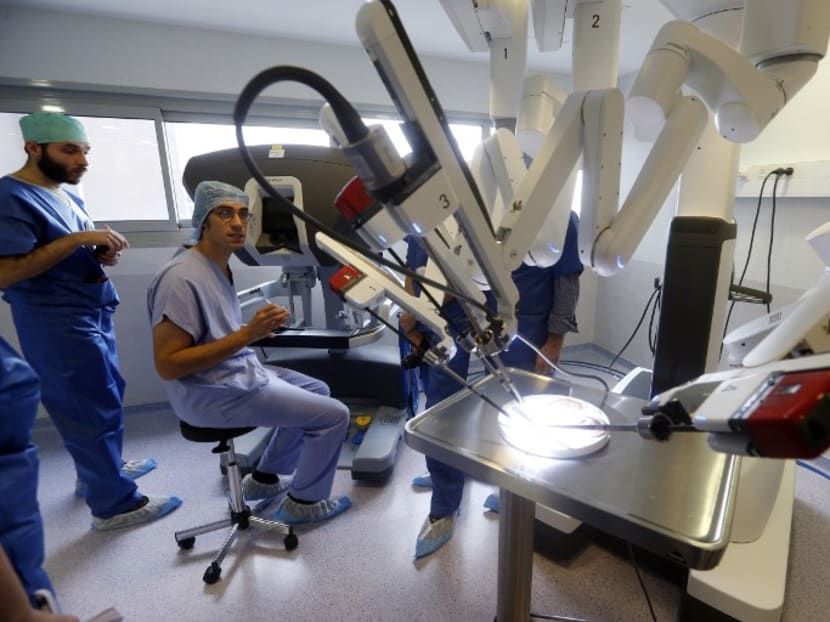Major surgery with minimal impact using 'da Vinci' robot
From fixing joints to removing wombs, prostates and tumours in hard-to-manoeuvre areas like the head and neck, Singapore surgeons are using a surgical robot approved by the United States Food and Drug Administration, known as the da Vinci, to perform an increasing number of minimally invasive surgeries.
From fixing joints to removing wombs, prostates and tumours in hard-to-manoeuvre areas like the head and neck, Singapore surgeons are using a surgical robot approved by the United States Food and Drug Administration, known as the da Vinci, to perform an increasing number of minimally invasive surgeries.
During the procedure, the surgeon controls a set of three or four ultra-flexible mechanical arms through tiny incisions while seated at a nearby console which offers a magnified 3D view of the entire procedure. If he develops a hand tremor during the process, the system ignores it to allow for high-precision movements.
“Robotic surgery has the same advantages of minimally invasive surgery as it incurs less pain and allows faster recovery compared to an open surgery,” said Dr Lewis Liew, a urologist and kidney transplant surgeon at Farrer Park Hospital. According to him, robotic surgery is used in nearly all radical prostatectomies, or the removal of the prostate gland and some tissue around it to treat prostate cancer, in Singapore.
Obstetrician and gynaecologist Suresh Nair said the technology allows surgeons to perform complicated surgeries that can be challenging using the conventional keyhole method, thus providing patients with more surgical options.
At least 70 per cent of his hysterectomy cases are carried out robotically; the rest are done using keyhole surgery, and only 1 per cent is done via open surgery.
With the conventional keyhole method, the instruments are inserted through tiny incisions and hand-held at a distance by the surgeon, who performs the procedure with his arms and elbows raised across the patient, said Dr Nair.
Despite its advantages, Dr Liew does not foresee robotic surgery replacing more traditional forms of surgery.
“Open surgery will still be required for complex and large tumours while laparoscopic (keyhole) surgery has a role to play in cases that do not require a high degree of skill level, such as suturing. They may also be more cost-effective than robotic surgery,” he said.
For example, the cost of robotic surgery for partial nephrectomy, or the removal of a renal tumour while preserving the remaining kidney, is about 50 to 80 per cent higher than that of open surgery, said Dr Liew.
But robotic surgery may end up to be a more cost-effective option, in terms of entire lifetime care.
“It costs less to care for an endometrial cancer patient undergoing robotic surgery than a patient undergoing open surgery,” said Dr Joseph Ng, senior consultant at NUH Women’s Centre and the National University Cancer Institute, Singapore.
EVELINE GAN







